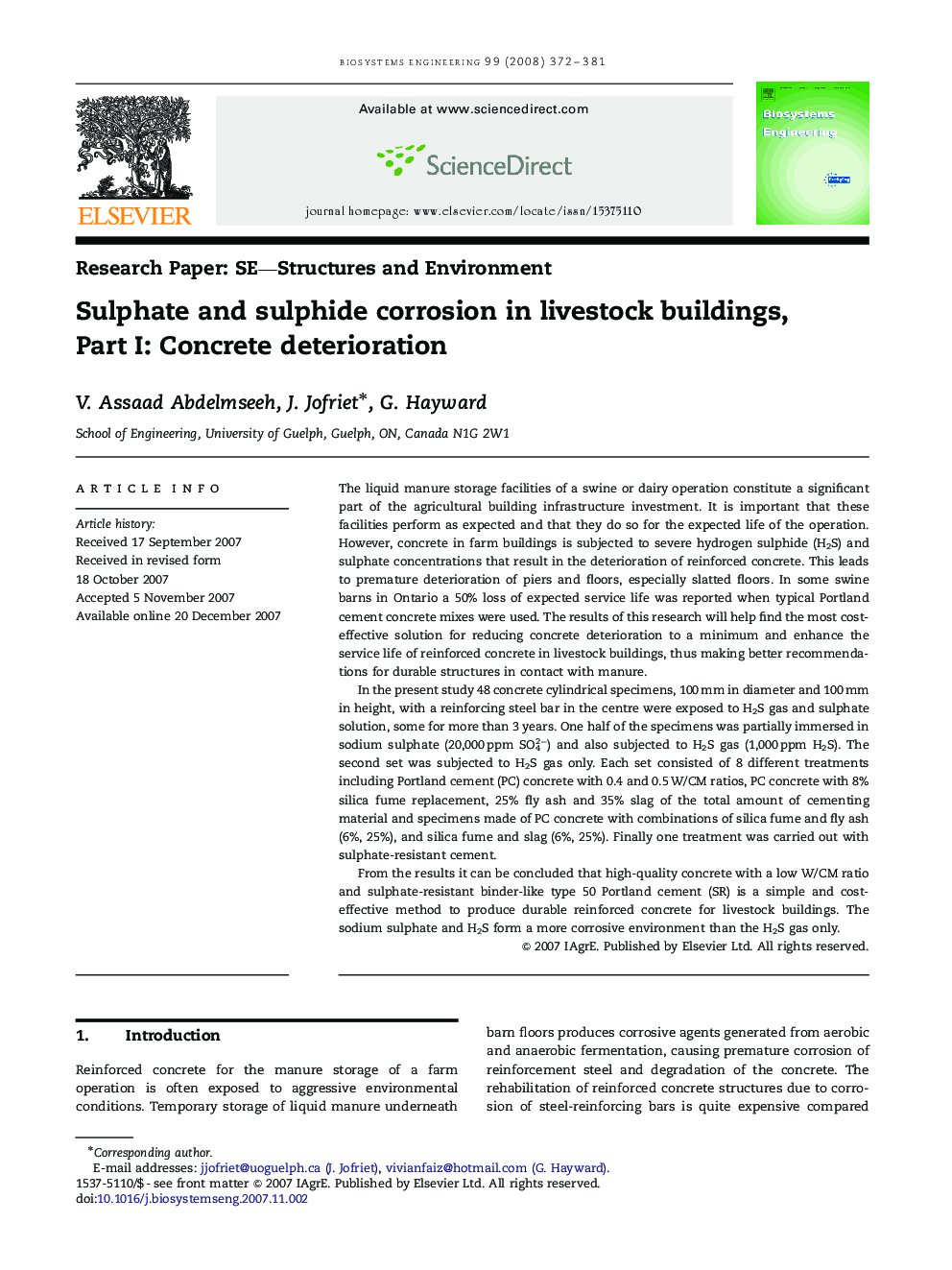| Article ID | Journal | Published Year | Pages | File Type |
|---|---|---|---|---|
| 1712413 | Biosystems Engineering | 2008 | 10 Pages |
The liquid manure storage facilities of a swine or dairy operation constitute a significant part of the agricultural building infrastructure investment. It is important that these facilities perform as expected and that they do so for the expected life of the operation. However, concrete in farm buildings is subjected to severe hydrogen sulphide (H2S) and sulphate concentrations that result in the deterioration of reinforced concrete. This leads to premature deterioration of piers and floors, especially slatted floors. In some swine barns in Ontario a 50% loss of expected service life was reported when typical Portland cement concrete mixes were used. The results of this research will help find the most cost-effective solution for reducing concrete deterioration to a minimum and enhance the service life of reinforced concrete in livestock buildings, thus making better recommendations for durable structures in contact with manure.In the present study 48 concrete cylindrical specimens, 100 mm in diameter and 100 mm in height, with a reinforcing steel bar in the centre were exposed to H2S gas and sulphate solution, some for more than 3 years. One half of the specimens was partially immersed in sodium sulphate (20,000 ppm SO42−) and also subjected to H2S gas (1,000 ppm H2S). The second set was subjected to H2S gas only. Each set consisted of 8 different treatments including Portland cement (PC) concrete with 0.4 and 0.5 W/CM ratios, PC concrete with 8% silica fume replacement, 25% fly ash and 35% slag of the total amount of cementing material and specimens made of PC concrete with combinations of silica fume and fly ash (6%, 25%), and silica fume and slag (6%, 25%). Finally one treatment was carried out with sulphate-resistant cement.From the results it can be concluded that high-quality concrete with a low W/CM ratio and sulphate-resistant binder-like type 50 Portland cement (SR) is a simple and cost-effective method to produce durable reinforced concrete for livestock buildings. The sodium sulphate and H2S form a more corrosive environment than the H2S gas only.
